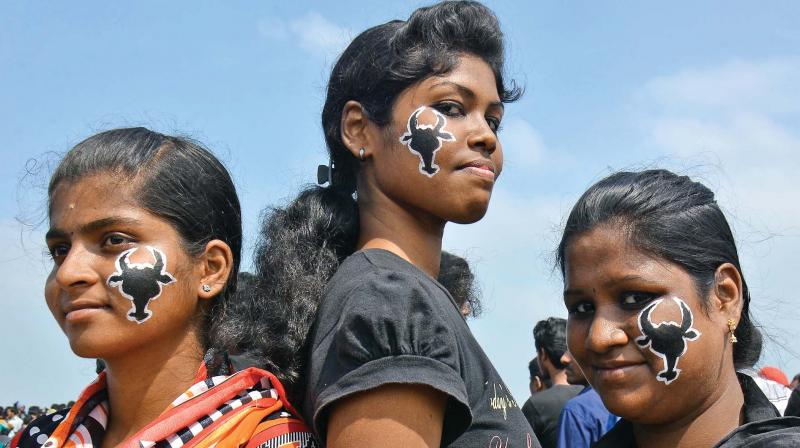Jallikattu: Guilty of putting bull before farmer

The jallikattu protests were by no means the biggest in history. In terms of numbers, they were completely overshadowed by the estimated 3.5 million people who were involved in the Women’s March over a January weekend, demonstrating against their bogey man in the White House.
What made ‘Occupy Marina,’ or the movement with the more expansive title of ‘Tamil Spring,’ different was it succeeded in achieving its objective. The history of modern marches and movements has generally been pockmarked with failure more than success until it came to the Arab Spring from when on protests have begun to take on a whole new dimension.
It is said that in the digital age, it is not the size of the protest that matters as much as whether it succeeds in its mission. The power of connectivity — email, mobile phone with communications apps, crowdfunding, Internet with its most popular Facebook etc. — is such it is easier to get together a large protest than it used to be.
At its height, the Marina movement may have seen five lakh participants, which is minuscule compared to the show of women’s power around the world just a few days later. But then also consider that the anti-war protests and the ‘Occupy’ movements of the new millennium never met their goals.
Chennai’s youth and students stood out for putting together the most peaceful protests since the days of Mahatma Gandhi. It is a pity then that anti-social elements, with a history of animus against the police, bloodied the climactic portion of the Marina Movement.
We will probably never know if the fence ate the crop as in the videos seen of police personnel setting light to vehicles, either in retaliation to being attacked or in a more sinister conspiracy to bring a bad name to the most cohesive and concerted public action by members of the civil society.
Any probe conducted by official India is suspect and is unlikely to get at the truth as most of them begin with a one-point agenda of sustaining the formal conclusion, always arrived at fairly early, that the state is never wrong. But this is one occasion on which they seem to have accepted that the evidence tendered is true.
The irony is the fight for jallikattu and its victory came in a wrong year. The 2017 harvest must have been a flop compared to the rich ones the Cauvery delta has seen in history. Let us not forget the jallikattu is part of the celebration of the harvest festival of Pongal.
This is the season in which, by one credible count, 169 farmers have died so far in TN. All deaths, whether self-inflicted or caused by the disappointment of seeing their fields ravaged by drought, were the direct result of one of the poorest years of the monsoons, both Southwest and Northeast, for the region.
The few protests staged by farmers — made distinct by the colourful thundu, generally green, that they drape over their shoulders — have been very small demonstrations of their understandable angst.
The lack of empathy among the lay public for the lot of the farmer has been a surprising feature of the season although this is the worst performing one in terms of agricultural output in the rice granary of South India.
The state has done its duty in putting forward its sizeable demand of close to Rs 50,000 crore as drought relief. But the process of New Delhi decision making and follow-up action can be so cumbersome as to mean little for the distressed farmer who stares either at increasing indebtedness from which there is no real relief or death. For the farmer, not to be able to produce food grains is a fate far worse than poverty.
The SC showed a far greater understanding of the depth of the problem in asking for the Centre’s views on coming out with a crop loans waiver policy in the light of increasing farmer suicides. Some accounts have it that more than three lakh farmers have taken their own lives in India since 1995 from when some kind of national accounting figures exist.
The five states of Maharashtra, Madhya Pradesh, Andhra Pradesh, Karnataka and Chattisgarh are the leaders, but Punjab is not far behind. It is not a matter of pride that Tamil Nadu is fast catching up now. In a sense, the jallikattu protests tended to put the bull before the farmer. Can we do something about the plight of the farmers soon?

